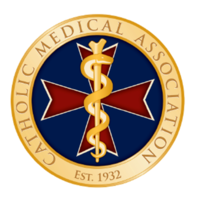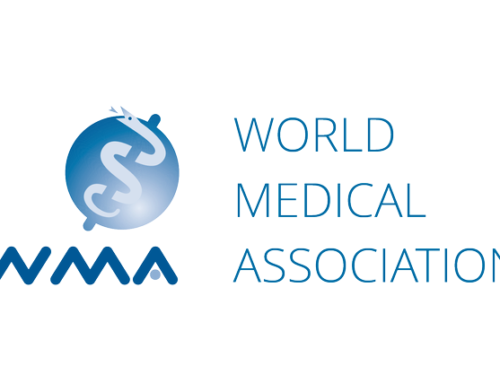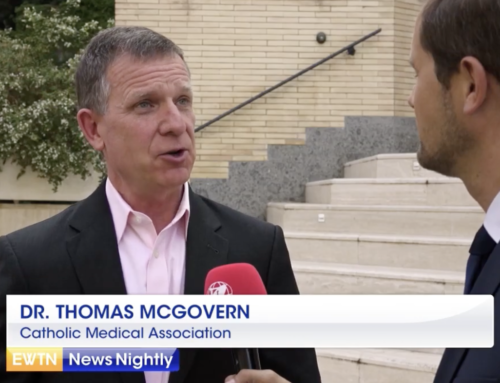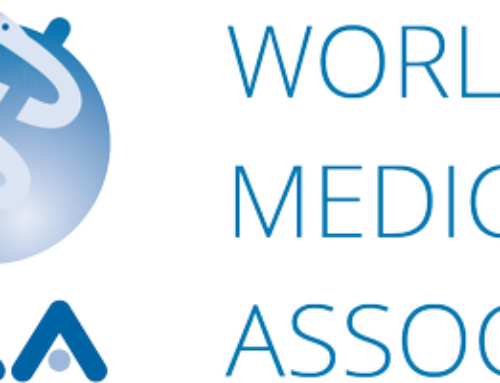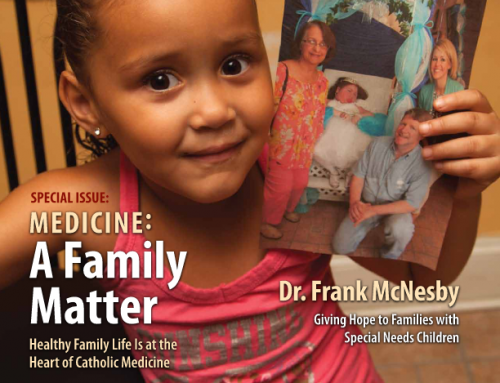BY NADIA SMITH
The last decade has witnessed an increasing momentum behind eliminating protections, exceptions and accommodations for objecting to medical standards in the name of conscience. Who are the leading opponents of conscience protections, and what would happen to medicine if they had their way? Those were the questions answered at the latest meeting of the CMA’s Virtual Journal Club.
Led by Guild Presidents Dr. Thomas Carrol of the Finger Lakes Guild and Dr. Felix Rodriquez of the Palm Beach Physicians Guild, the Virtual Journal Club has attracted CMA members from all over the country, who have been meeting each month to discuss a wide range of pressing medical issues. The latest meeting on February 10 featured CMA member, Milwaukee Guild President Dr. Cynthia Jones-Nosacek, who presented the arguments against conscientious objection in medicine and the harm they can do.
In her presentation, Dr. Jones-Nosacek discussed the published papers of six main opponents of conscience protection rights in medicine: philosophers and bioethicists Julian Savulescu and Udo Schuklenk; Dr. Christian Fiala and abortion rights activist Joyce Arthur; and Dr. Ezekiel Emmanuel and historian Ronit Stahl.
She explained that these opponents believe that to object to certain medical procedures such as abortion, gender reassignment surgeries, sterilization and physician-assisted suicide on the basis of conscience is unethical, unprofessional and harmful.
They believe that medicine is not a vocation, but rather an amoral contract in which medicine is viewed as a commodity. Therefore, patients have a right to legal services even if the physician finds the services contrary to what is in the best interest of his or her patient.
In their view, Dr. Jones-Nosacek explained, not doing what the patient wants is the same as not treating the patient. They further believe that there should be no exception within medicine for conscientious objection and that those physicians or healthcare professionals with objections should be punished by either criminal penalties or loss of license.
As Dr. Jones-Nosacek notes, there are far-reaching ramifications within the profession — to physicians and to patients — if conscience rights are nullified.
“Medicine is a high-risk profession with a high burnout rate, but it’s interesting to note that those who see medicine as a vocation are less likely to burn out than those who share Savulescu’s view of medicine as an amoral contract,” she told those gathered virtually.
She also cited the inevitable loss of trust that would impact the patient-doctor relationship if medicine becomes about numbers, not individuals, and physicians are bound to act against their consciences. In this scenario, patients cannot be confident of the physician’s motivation for the care provided — is it in the patient’s best interest or is it based on fear of retaliation from the doctor’s employers or medical societies?
She also pointed to the dangers of determining medical standards not by empirical science and moral truth, but rather by the majority rule of a medical society. She referenced three historical examples that today would be considered abhorrent, but were accepted practice by the American Medical Association and were government sanctioned.
She noted the dark history of forced eugenics sterilization that was standard care of practice during the Progressive Era of the United States. From the early 1900s through the 1970s, public health policy — federally funded and backed by state laws, medical societies and OB-GYN physicians — was to force sterilization on the poor, persons with mental and physical disabilities, prisoners and minorities. This practice was even justified by the Supreme Court in 1927, in the Buck v. Bell case, which states that, “The principle that sustains compulsory vaccination is broad enough to cover cutting the Fallopian tubes […]. Three generations of imbeciles are enough.”
The United States was an international leader in eugenics — the bogus science that aimed to improve the genetic quality of a human population by promoting procreation among those judged to be superior while sterilizing people and groups judged to be inferior. In fact, Nazi Germany modeled its eugenics program after U.S. eugenics laws, specifically Indiana’s and California’s laws. At least 64,000 people were sterilized in the U.S. and approximately 400,000 in Germany.
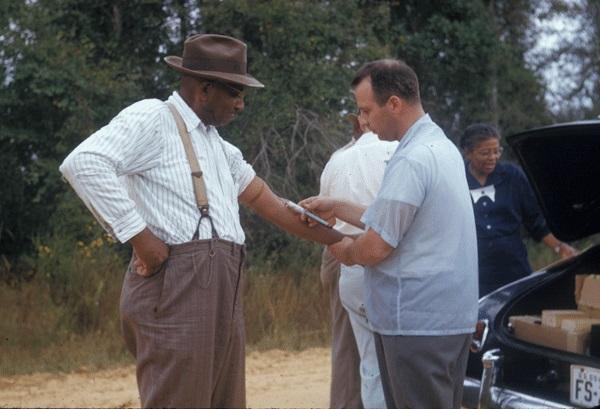
A man in the Tuskegee Syphilis Experiment having his blood drawn under the guise of treatment. (U.S. Centers for Disease Control and Prevention)
She also mentioned the Tuskegee Syphilis Experiment. This 40-year study by the U.S. Public Health Service (later controlled by the Center for Disease Control) enrolled in the study 600 impoverished African-American sharecroppers from Macon County, Alabama for the purpose of observing the effects of untreated syphilis in black males. Of these men, 399 had latent syphilis and 201 did not. As an incentive for participation in the study, the men were promised free medical care, but were deceived by the PHS, who never informed subjects of their diagnosis nor the intention not to treat them.
By the end of the study in 1972, only 74 of the test subjects were still alive. Of the 399 infected men, 28 died of untreated syphilis and 100 died of related complications. Further, in the course of the study, 40 wives of subjects had been unknowingly infected, and as a result 19 of their children were born with congenital syphilis.
Dr. Jones-Nosacek pointed out that what is often unknown or overlooked is that the study was supported by The Tuskegee Institute, an historically black college in Alabama, and its hospital the John. J. Andrew Memorial Hospital, as well as the local chapters of the National Medical Association which represented African-American physicians, and the American Medical Association. Further, the study’s findings were published in various medical journals throughout the 40 years.
She also spoke about Willowbrook State School, the infamous New York state institution for children with intellectual and physical disabilities. Dr. Saul Krugman, the head of pediatrics at the New York University School of Medicine, conducted 20 years of experimentation and research there on hepatitis. As part of one study, he purposefully infected 60 healthy children with hepatitis for the purpose of exploring the causes and differences between hepatitis A and B. Infection was introduced to the children by mixing infected feces into the subject’s food and chocolate shakes.

Children with mental and physical disabilities at the infamous Willowbrook State School in Staten Island, where unethical hepatitis experiments took place.
Those papers were published in the Journal of the American Medical Association and Krugman was lauded for his achievements in hepatitis research by medical journals and societies of his day.
“We have to remember that today’s standards may be tomorrow’s outrages,” she said. “The ones who suffer are the patients. Sometimes objecting to and refusing to perform immoral and unethical procedures is the only way to correct systemic injustices.”
That is exactly what happened in all of those instances. Healthcare conscientious objectors refused to go along. These whistleblowers created public outrage that then led to Congress implementing protection laws and medical and governmental institutions correcting those injustices.
Ironically, these opponents often cite harm to patients as an argument for eliminating conscience protection, but as Dr. Jones-Nosacek points out, the harm is only one of inconvenience.
“All of them when they discuss harm, the harm given is anecdotal. There are no evidence-based papers showing harm over what conscientious objectors do in terms of patient care verses what they are describing as patient care. Most of the harm they do describe is the harm of inconvenience,” she said.
Further, she noted, opponents do not want to recognize the sound medical arguments and empirical data available that show how these objectionable procedures do cause real harm to patients. History is on the side of conscientious objectors.

